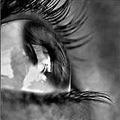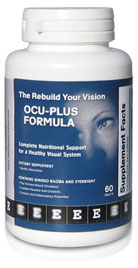|
The Retina Is Only One Important Part of Your Eyes
The main parts of the eye are The Retina, Cornea, and the Iris. The eyes of a human being are some of the most intricate and amazing organs in the entire human body. In a level of detail unsurpassed in modern science, eyes can detect and process multiple light frequencies through tiny biological photoreceptors, converting them into electrical impulses so that the neurons of the brain can process them further and create an image out of them. Once these signals are transmitted into the brain's visual cortex and the image is created, we experience the phenomenon of sight. A Retina is one of the most important steps in this entire process because it actually captures the images in front of you. If you think of the eye like a camcorder, the pupil would be the lens and the retina would be the film. It is a clear, miniscule layer of tissue that lines the inner surface of the eye and responds to light. When a beam of light comes in contact with a retina, it releases thousands of separate chemicals that make their way up the main corridor to the brain, known as the Optic Nerve. The brain then takes these chemicals and sorts them out based on volume and saturation, allowing it to determine the sort of input that is affecting the parts of the eye, and from there is able to extrapolate that data and form a highly accurate image of the world we are looking at. It's truly incredible what the eye can do.
In addition to reacting to light, retinas serve another purpose that isn't even related to eyesight; it's related to sleep. When that same beam of light comes in contact with this it sends a flood of chemicals up the optic nerve, but it also sends a very different set of chemicals down the retino-hypothamalic tract. The essentially lets the brain know whether it is day or night so that it can program the body's circadian rhythm. The circadian rhythm is a process by which most organisms on the earth adjust their sleep and waking state based on a 24 hour cycle. Even tiny single cell organisms react to light in terms of circadian rhythm. As mentioned before, retinas contains thousands of photoreceptors that process light the same way a solar panel is made up of dozens of individual cells. There are two types of photoreceptors in the retinas, and they're called rods and cones because that is what the cells actually look like when viewed under a microscope. There are approximately 6 million cones in a normal human retina, and the same retina will hold over 125 million rods. Cones provide the basis for over 80 percent of human vision, and are also the culprits responsible for perception of color. Color Blindness is usually a lack one of the three main types of cones that register red, green, and blue. When you take steps to Protect Your Eyesight, it's important to make sure your Retina is well taken care of, because without a retina you would be completely blind.

Subscribe to EyeSight Vision Care! , our monthly newsletter with in depth information to help you keep up to date on how to Protect Your Eyesight with a free bonus. Fill out the form below. You'll then receive an email asking you to confirm that you subscribed. You'll always have the option to unsubscribe at the click of your mouse. The Retina to the Visual Process
|
More Information





















